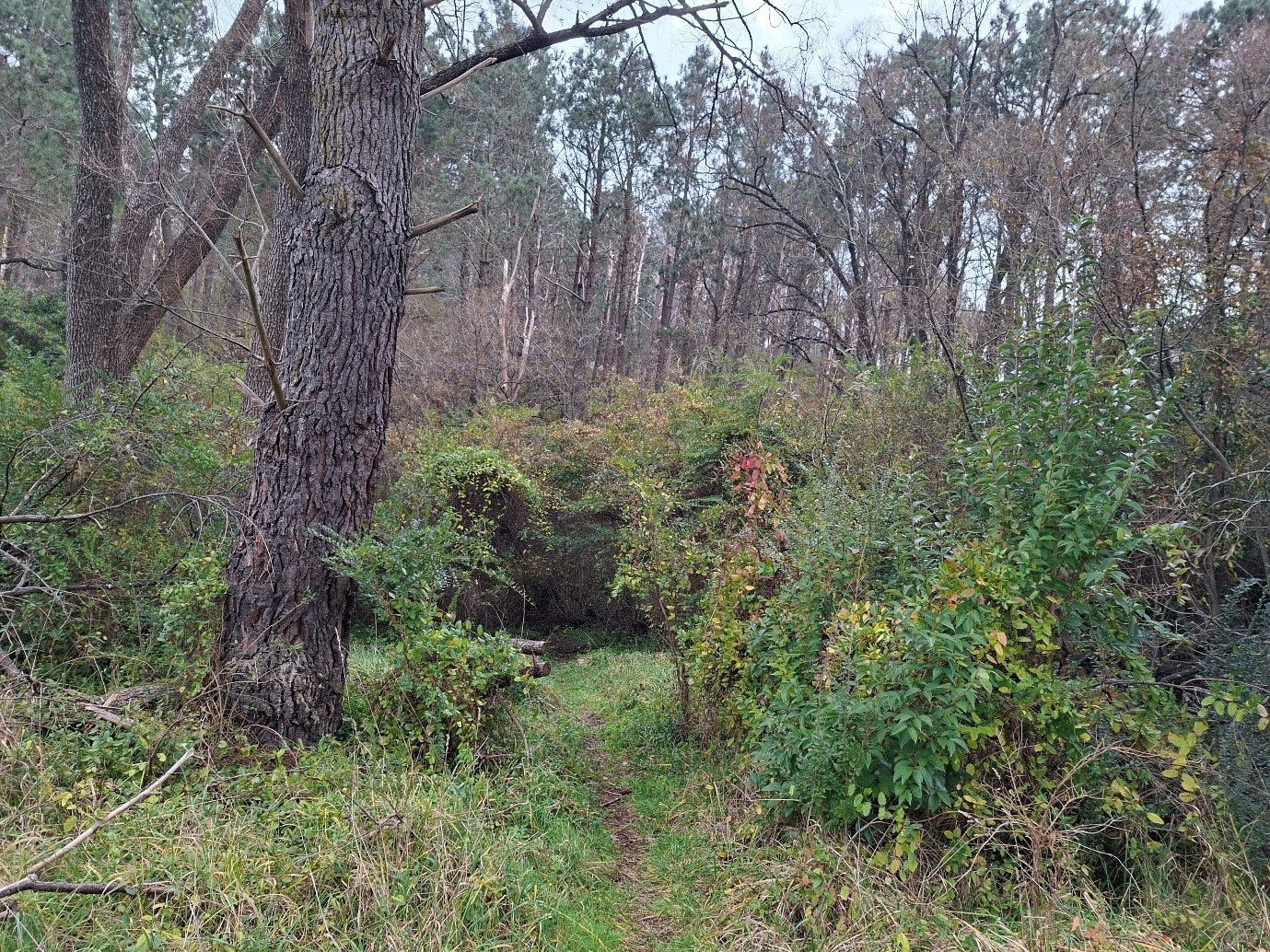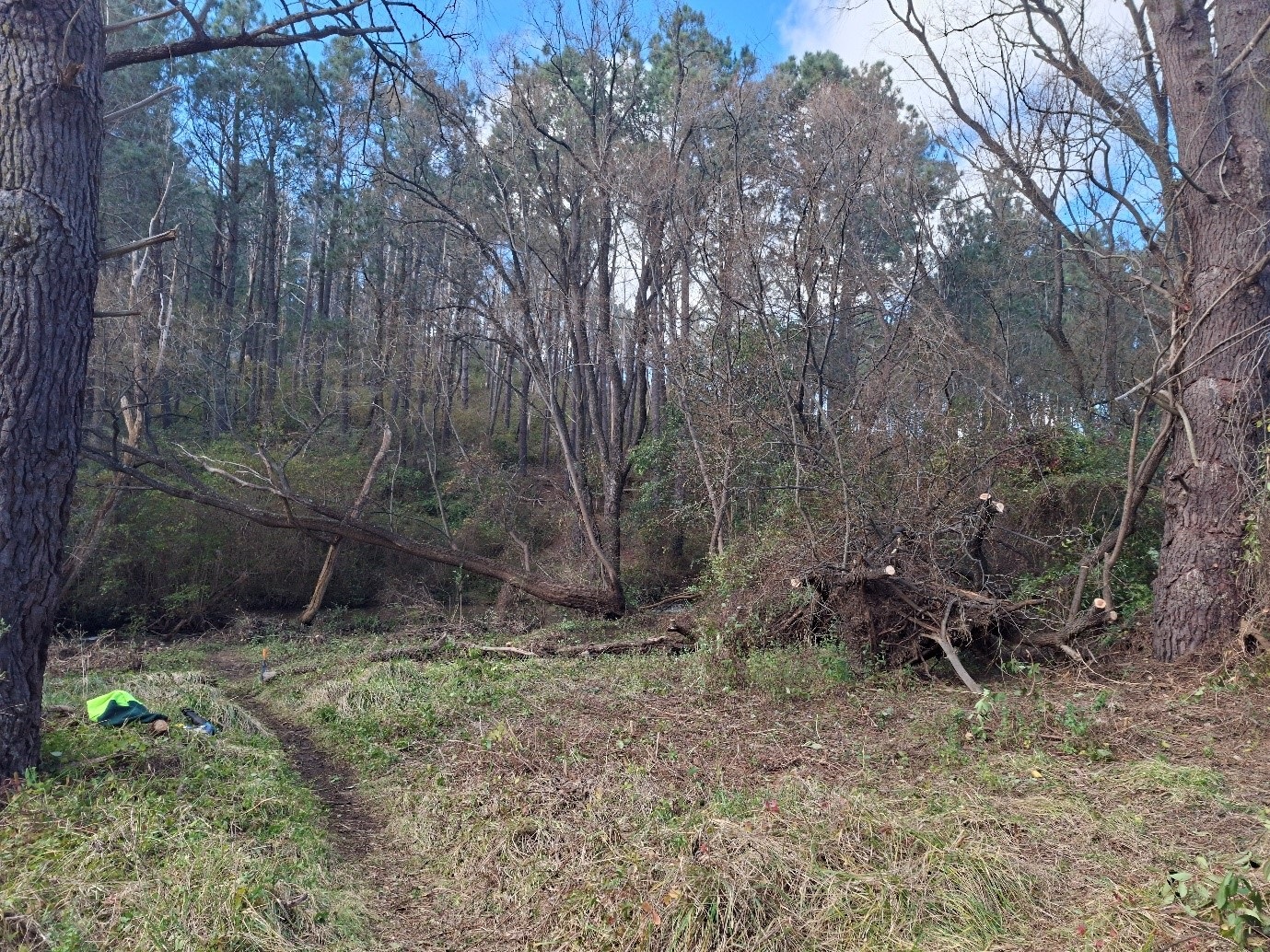Winter Weed Blitz Targets Woody Invaders and Serrated Tussock
Published on 28 July 2025

It’s been a productive winter period for the Weeds Control Team, with focused efforts underway throughout July and August to target invasive woody weeds and prepare for the active spring growth period.
Woody Environmental Weeds – July & August Focus
Our team continues to concentrate on removing woody evergreen environmental weeds across the Shire. Key target species include:
-
Broad-leaf Privet
-
Chinese Privet
-
Cotoneaster
-
Pyracantha
-
Pine tree seedlings
Major project areas this winter include:
-
Council Creek Reserve (corner of Fitzroy and Salisbury Streets): Removal of Privet species from the riparian zone.
-
Mount Mutton: Follow-up control works targeting Cotoneaster as part of a Koala Habitat Restoration Project.
We encourage all Shire residents to join us in controlling Privet on private land. It can be removed year-round. Larger specimens should be cut down and the stumps painted immediately with a 50% Glyphosate solution. Seedlings can be easily pulled by hand. For riparian areas, we recommend using an aquatic-safe glyphosate product such as Apparent Glyphosate Green 360.
Some great native alternatives to plant instead of Privet include:
-
Acacia rubida (Red-stemmed Wattle)
-
Acacia dealbata (Silver Wattle)
-
Acacia filicifolia (Fern-leaf Wattle)
-
Callistemon viminalis (Weeping Bottlebrush)
-
Callistemon citrinus (Scarlet Bottlebrush)

Figure 1: Before. Privet spp. and Japanese honeysuckle infesting riparian zone on corner of Fitzroy and Salisbury street.

Figure 2: Ongoing. Manual removal of Privet spp on riparian zone.

Weed Watch: Serrated Tussock
We’re also keeping a close eye on Serrated Tussock, a Weed of National Significance. This highly invasive grass threatens native pastures and biodiversity and is difficult and costly to control once established.
How to identify Serrated Tussock:
-
Grows ~45cm tall and 25cm wide
-
Narrow, tightly rolled, upright leaves with a serrated feel
-
White leaf base
-
Hairless white ligule (1mm) between leaf and sheath
-
Seed heads present Sept–March, with a purple tinge when mature
-
Golden-brown seeds (1.5mm); plants can produce up to 140,000 seeds per season
-
Fibrous roots in top 20cm of soil
How it spreads:
-
Carried by wind (up to 10km), water (up to 60km), animals, vehicles, machinery, and fodder
-
Seeds remain viable after passing through livestock
Impacts:
-
Non-palatable and non-nutritious for stock; can cause malnourishment or death
-
Quickly outcompetes native grasses and pastures
-
Contaminates hay and grain
Control Methods:
Chemical Control (July–September):
-
Flupropanate herbicide: Long residual (up to 2 years); effective for seedlings and seed suppression.
Rate: 150ml per 100L water
-
Glyphosate herbicide: No residual; fast-acting on growing plants.
Rate: 0.7–1.3L per 100L water
Always follow label directions and legal requirements (EPA and APVMA).
Physical Control:
-
Dig out plants (including roots) and double-bag seed heads
-
Burn or destroy removed plant material
-
Replant with pasture or native species to prevent re-infestation
Prevention:
-
Avoid buying fodder/machinery from infested areas
-
Quarantine new stock (10–14 days)
-
Clean vehicles and equipment before moving between properties
-
Install and monitor windbreaks
-
Maintain 100% ground cover
Grazing Note:
Livestock may graze young serrated tussock briefly, but overgrazing leads to loss of condition and potential death due to plant balling in the stomach.
For more information, contact our team for advice on identification, safe chemical use, or reporting infestations on 02 6778 6300 or email council@uralla.nsw.gov.au